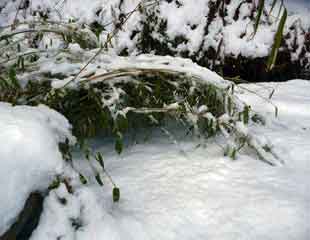
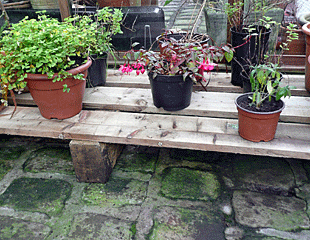
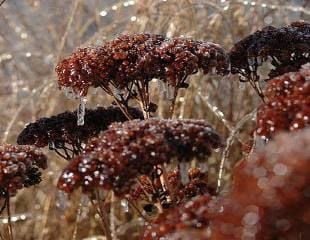
Winter Gardening Tips
Drain Water Butts
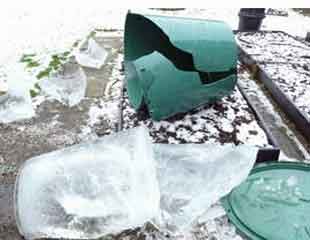
When a long spell of cold weather or freezing temperatures are expected it's a good idea to protect a water butt by draining it. When temperatures drop, the water inside the water butt freezes and as it does so it expands. The result is shown in the image left. The frozen water expands to the point it splits the plastic and the entire water-butt breaks.
I was caught out by the sudden, very cold weather and the water butt fractured. An expensive oversight. To avoid this problem, before the bad weather strikes disconnect and drain the water butt, and leave it disconnected until the worst weather has passed. To freeze a large solid a mass of water requires a spell of sub-zero temperatures, which can be experienced in December & January with temperatures remaining below freezing for many days. Simply re connect the water butt in the early spring.
Prevent snow damage to Shrubs
Clearing snow off from shrubs is good practical advice. In earlier years I have ignored it, thinking this advice was over complicating things when you could just stay indoors in the warm. Snow really does cause damage to the garden, especially evergreen shrubs.
The problem with snow is that it is heavy, and it weighs down the shrub damaging the branches. Evergreen shrubs with an open center, or cup shapes, allow the snow to pile into the centre and the shrub is at risk of damage.
The two images below show in the first photo (below left) a Cistus (Rock rose) the shrub's natural habit is open branches from the centre and the snow has flattened it to the ground. The snow is heavy, pressing the shrub's branches to the ground. If the snow freezes, it will freeze these branches solid to the ground. This traps traps and tensions them and they are vulnerable to snapping.
Clearing the snow allows the branches to lift back up again, releasing the tension shown in photo below center and clearly on the video.
The third image shows when after heavy snow, I didn't clear the accumulated snow from an Elaeagnus shrub. Result broken branches. Even though the shrub was established, with a trunk of about 10 cms in diameter, and so not a young immature shrub, its branches snapped mainly in the centre. As a result the damaged branches had to be pruned out, and since there were a good number of them, this left the shrub not in a great shape and it's taken years to grow back.
Snow really can cause damage to shrubs which are expensive to replace. See also a Sunday Gardener Video about dealing with snow in the garden.
Snow damage to shrubs
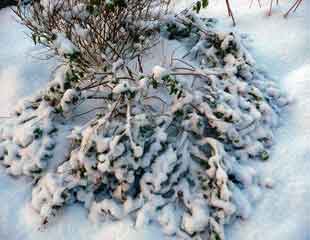

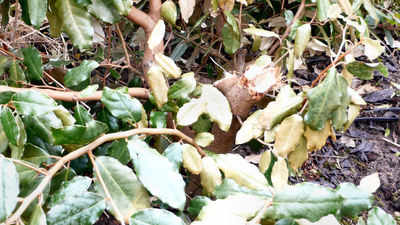
Dealing with Snow Damage
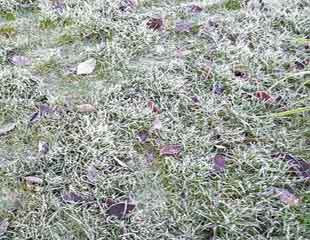
Keep of the lawn
It is not a myth, it really is a good idea to keep off the lawn when it is frozen.
Ever wondered about the advice not to walk on the grass in snow and frost? It's true that walking on the frost frozen grass can cause damage to the grass. This is because when the grass is frozen the leaves are brittle, with a result that when the leaves are stepped on the grass is prone to snap and break. The image left shows flat bits where the grass has been walked on which will leave brown marks where the grass is damaged, and may look unsightly in the spring. Given how hard it is to create a decent lawn its worth resisting walking on it during the very cold weather.
